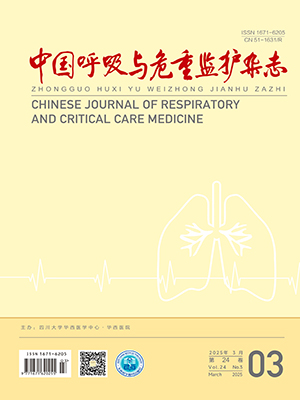Objective To investigate the prevalence and risk factors of venous thromboembolism ( VTE) in patients with acute exacerbation of COPD ( AECOPD) . Methods The patients with AECOPD admitted fromJune 2006 to February 2010 in Beijing Tongren Hospital were included for analysis. VTE was investigated in all patients ( whether or not clinically suspected) by a standardized algorithm based on D-dimer testing, 4-limb venous ultrasonography, and the patients with clinically suspected pulmonary
thromboembolism ( PTE) received ventilation/perfusion scan and ( or) computed tomography pulmonary angiography ( CTPA) . Results The total number of patients with AECOPD was 282, and the prevalence of VTE was 6% ( 17 /282) . Among the hypoxemia group( n = 84) , there were 16 patients with DVT with a prevalence of VTE of 19. 1% ( 16/84) in which 3 cases developed with PTE. In the non-hypoxemia group ( n =198) , the prevalence of VTE was 0. 5% ( 1/198) , and there was no case with PTE. The incidence of VTE in the hypoxemia group was significantly higher than that in the non-hypoxemia group( P lt; 0. 01) .Logistic analysis showed that lower PaO2 was the risk factor for VTE ( P lt; 0. 01 ) . Conclusions The incidence of VTE in AECOPD was 6% , mainly in the form of lower limb DVT. Hypoxemia was the risk factor for VTE in patients with AECOPD.
Citation: ZHUO Jie,BAI Peng,LI li,SUN Yongchang.. Hypoxemia Is a Risk Factor for Venous Thromboembolism in Acute Exacerbations of Chronic obstructive pulmonary disease. Chinese Journal of Respiratory and Critical Care Medicine, 2011, 10(2): 112-115. doi: Copy
Copyright © the editorial department of Chinese Journal of Respiratory and Critical Care Medicine of West China Medical Publisher. All rights reserved




